
Gibson started using this new wide-travel tune-O-matic bridge in late 1971, first appearing on the Les Paul Recording guitar. Its wider-spacing gave it a quite distinctive look, leading to the Gibson 'harmonica' bridge nickname - although this was never used by Gibson. It then appeared on the SG Custom, Standard and Special from 1973 (see the 1973 Gibson Solid body flyer), and then on all new models up until 1976: the Les Paul Signature, ES-325TD, L5S, L6S, Marauder and S-1. Generally used in conjunction with the Gibson stop bar tailpiece. Although fitted to a wide range of models, the unit was phased out from many of these guitars in the mid/late 70s; the exception being the L6S, Marauder and S1, which were fitted with it through to the early 1980s.
It was described as follows in Gibson literature, circa 1973: \"Gibson's newest Tune-O-Matic bridge; designed especially for light and super light gauged strings. The extra long saddle travel allows accurate tuning of the strings called for by today's rock musician. Nickel plated with mounting studs for solid and semi solid instruments\".
The bridge was made by Schaller in West Germany, and is marked 'Made in Germany' on the underside. Note the differing locations of this marking. On the mid seventies example shown here it is in the center, below the saddles; in the early eighties example it is in a rounded recess below the right hand side post-hole.
Gibson part number (complete assembly): 80040 (chrome), 80039 (gold); stud only: 10946 (chrome) and 10949 (gold); body insert only: 10947 (chrome) and 10948 (gold). Dimensions 88.5mm x 25.7mm. The bridge is not of uniform height, ranging from 7.7mm at the edges to 9.7mm in the centre (excluding saddles), or 12.8mm at the tallest point (including saddles).
Gibson started using this new wide-travel tune-O-matic bridge in late 1971, first appearing on the Les Paul Recording guitar. Its wider-spacing gave it a quite distinctive look, leading to the Gibson 'harmonica' bridge nickname - although this was never used by Gibson. It then appeared on the SG Custom, Standard and Special from 1973 (see the 1973 Gibson Solid body flyer), and then on all new models up until 1976: the Les Paul Signature, ES-325TD, L5S, L6S, Marauder and S-1. Generally used in conjunction with the Gibson stop bar tailpiece. Although fitted to a wide range of models, the unit was phased out from many of these guitars in the mid/late 70s; the exception being the L6S, Marauder and S1, which were fitted with it through to the early 1980s.
It was described as follows in Gibson literature, circa 1973: "Gibson's newest Tune-O-Matic bridge; designed especially for light and super light gauged strings. The extra long saddle travel allows accurate tuning of the strings called for by today's rock musician. Nickel plated with mounting studs for solid and semi solid instruments".
The bridge was made by Schaller in West Germany, and is marked 'Made in Germany' on the underside. Note the differing locations of this marking. On the mid seventies example shown here it is in the center, below the saddles; in the early eighties example it is in a rounded recess below the right hand side post-hole.
Gibson part number (complete assembly): 80040 (chrome), 80039 (gold); stud only: 10946 (chrome) and 10949 (gold); body insert only: 10947 (chrome) and 10948 (gold). Dimensions 88.5mm x 25.7mm. The bridge is not of uniform height, ranging from 7.7mm at the edges to 9.7mm in the centre (excluding saddles), or 12.8mm at the tallest point (including saddles).
List of Gibson guitar pickups
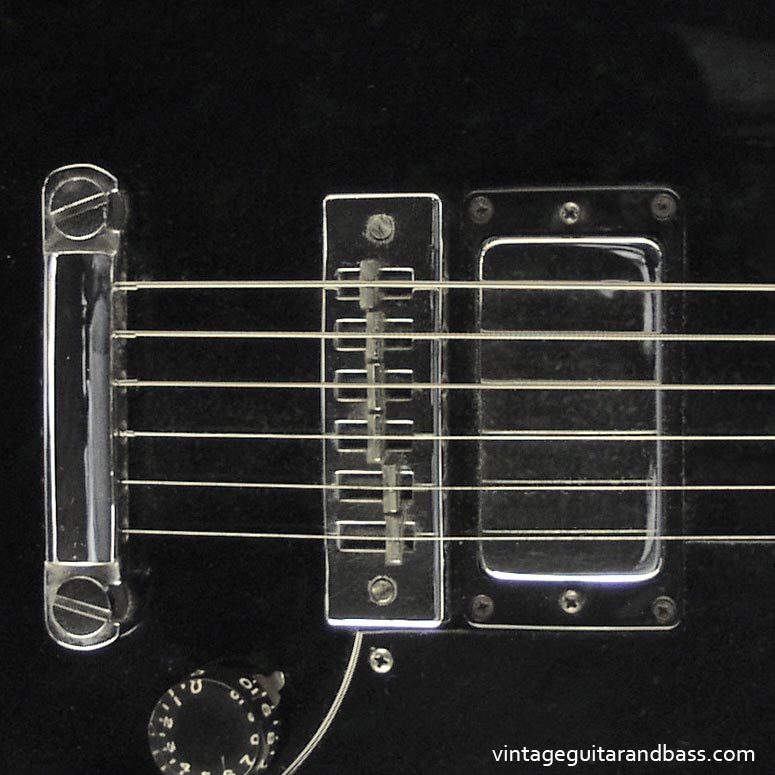

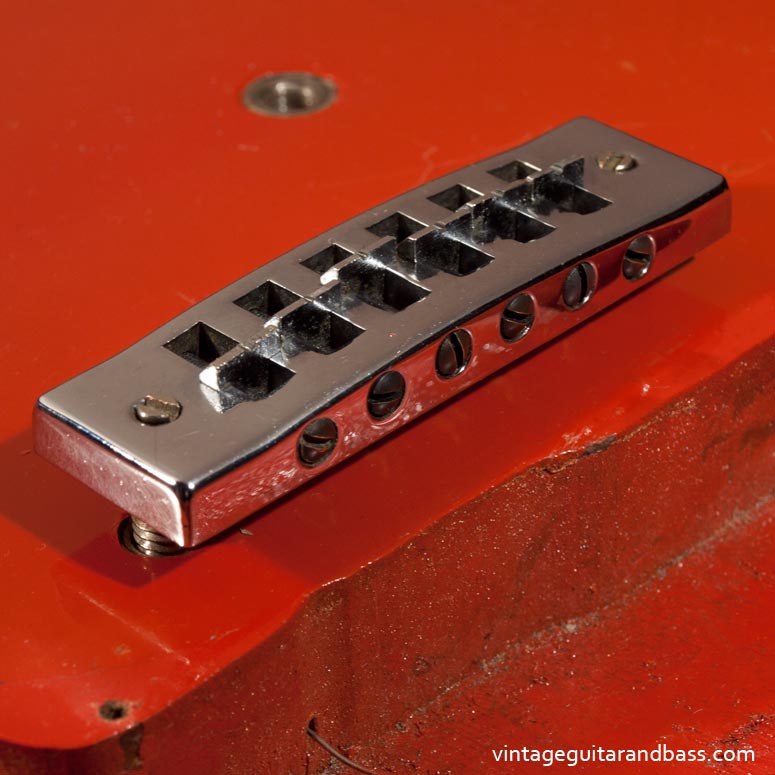


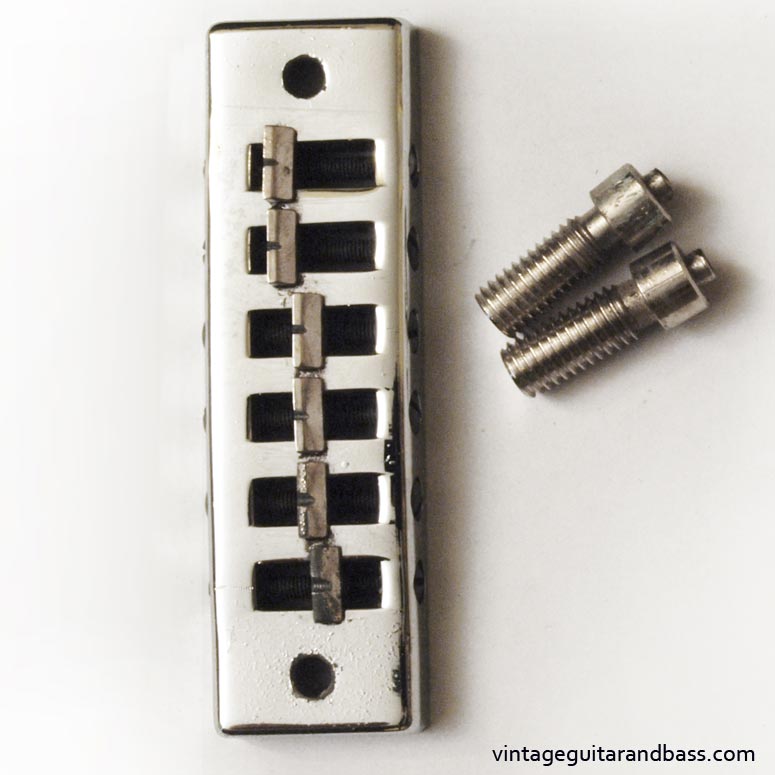


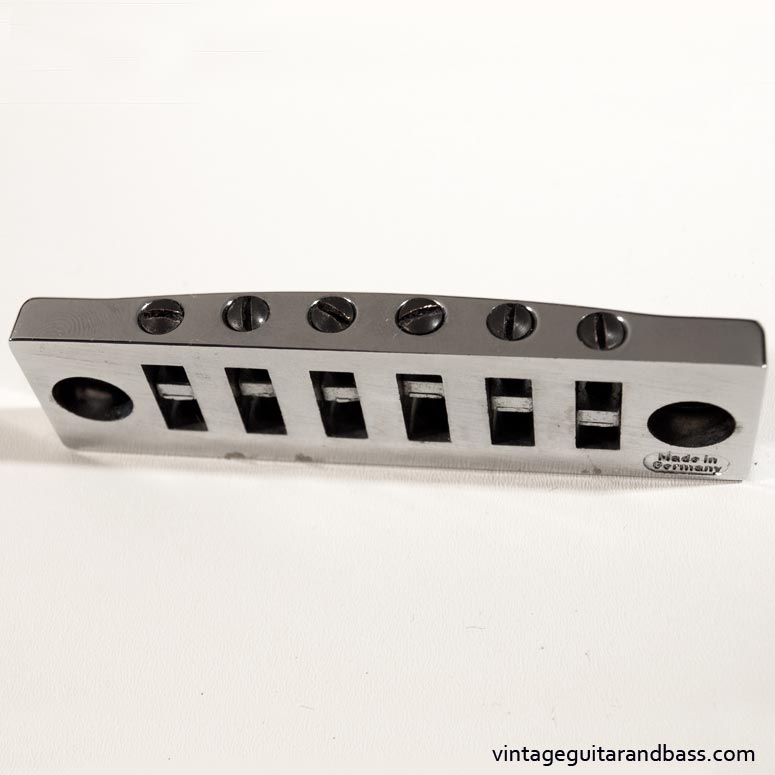
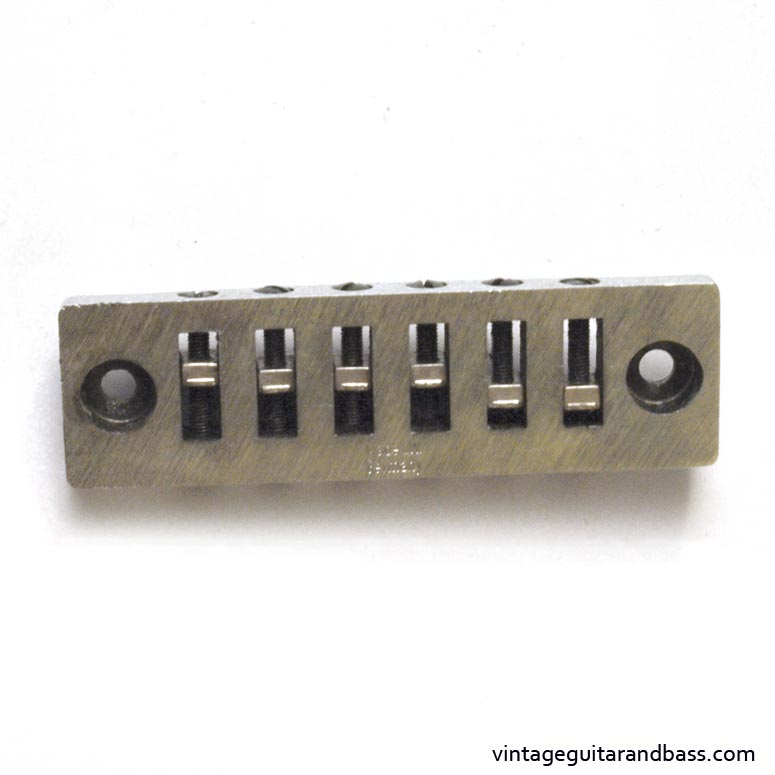
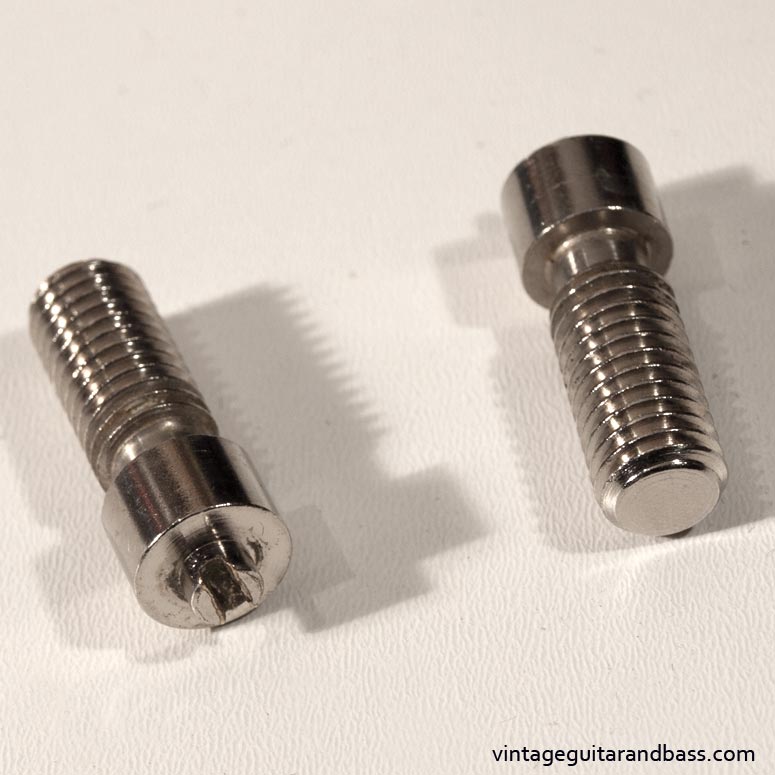

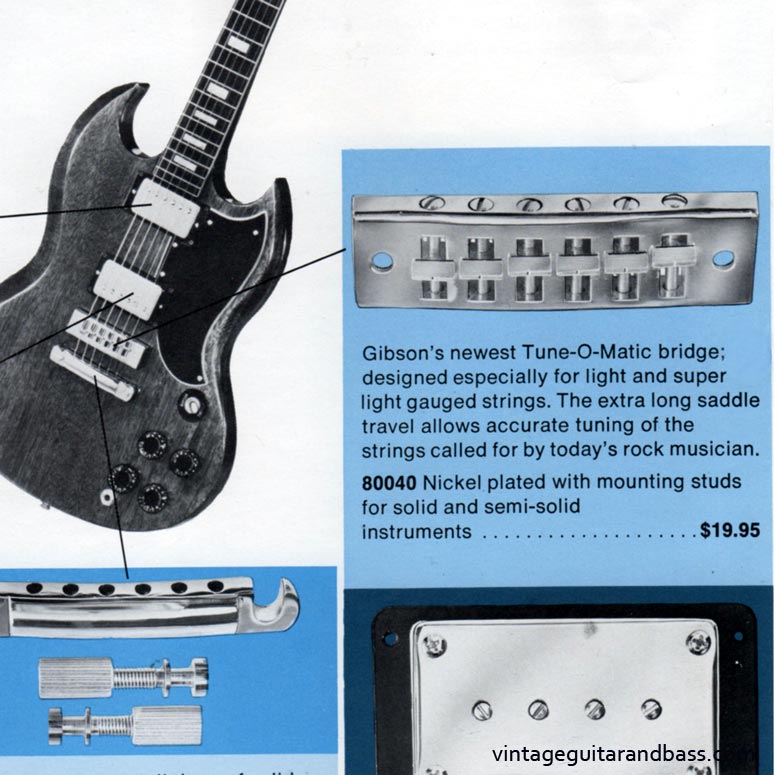
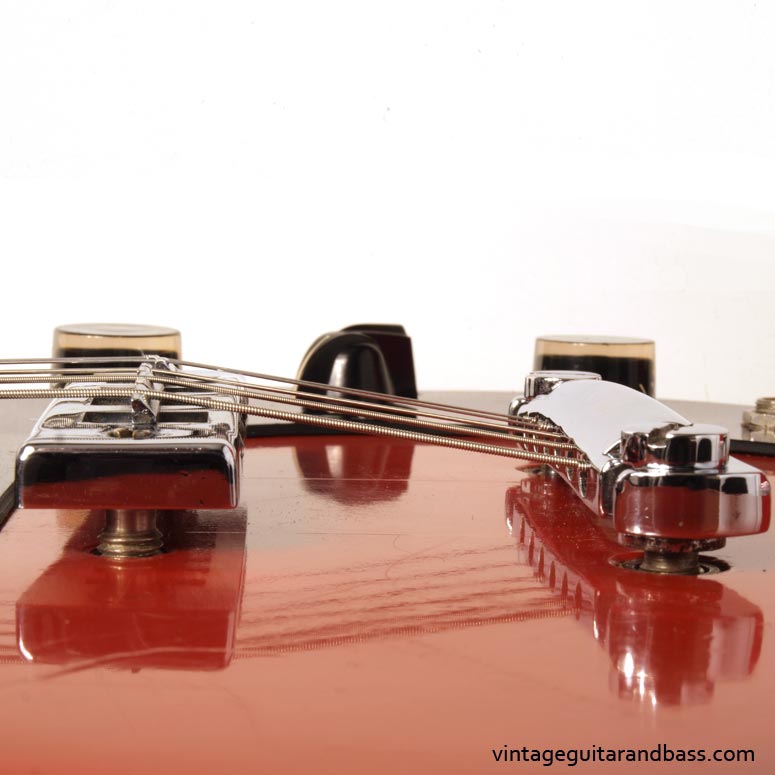
$55
$175
$205
$1350
$695
$249
$259
$345
$160
$270
$100
$200
$195
$495
$120
$395
$250
$300
$500
$40